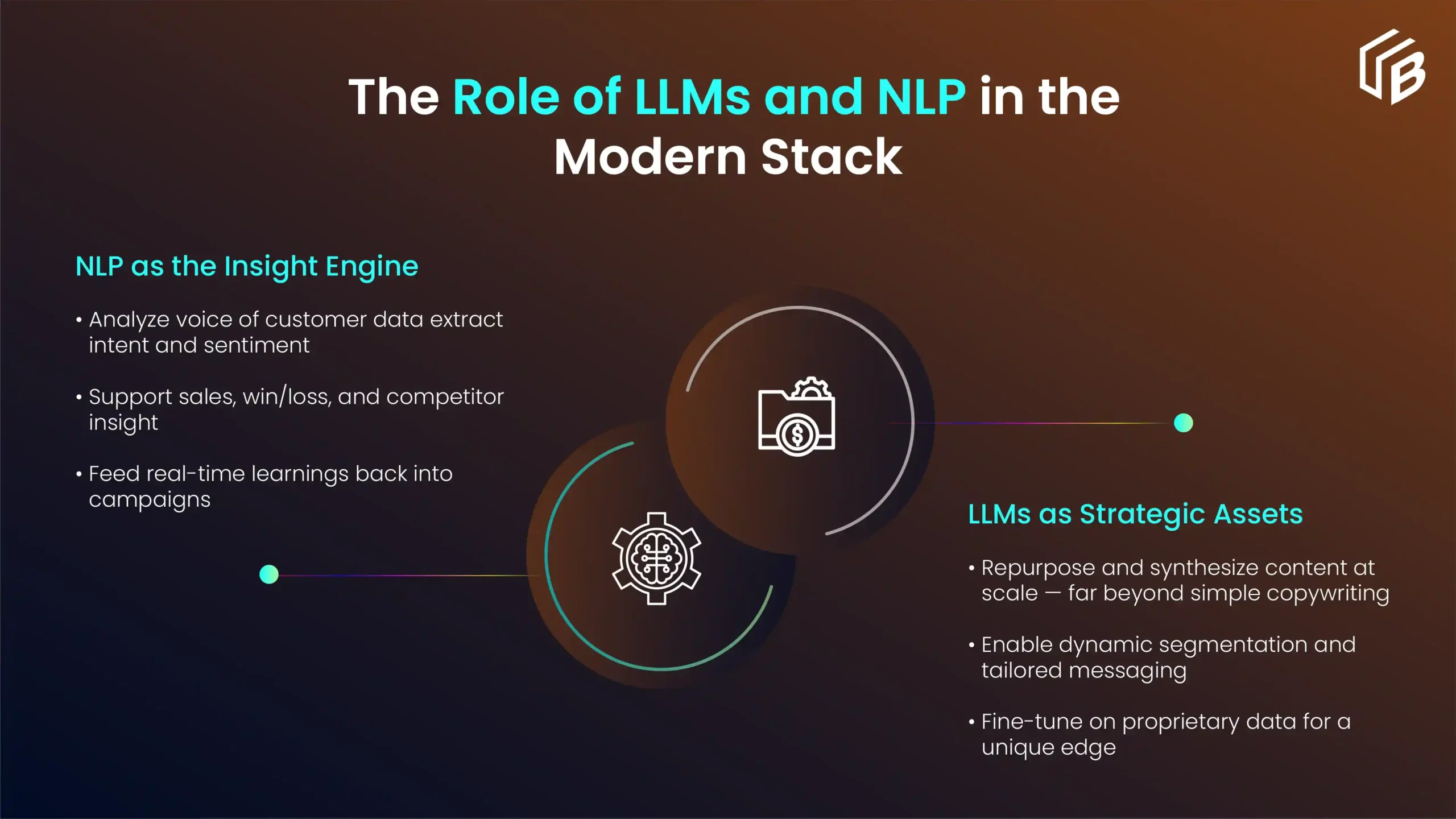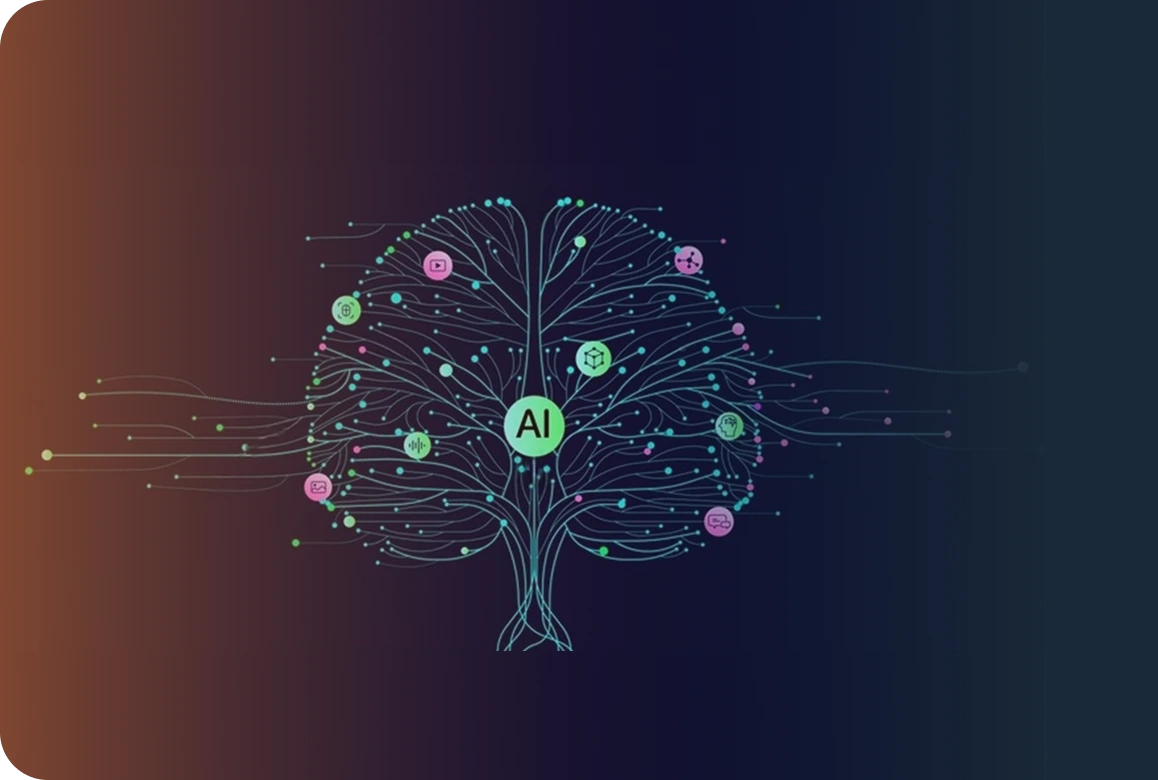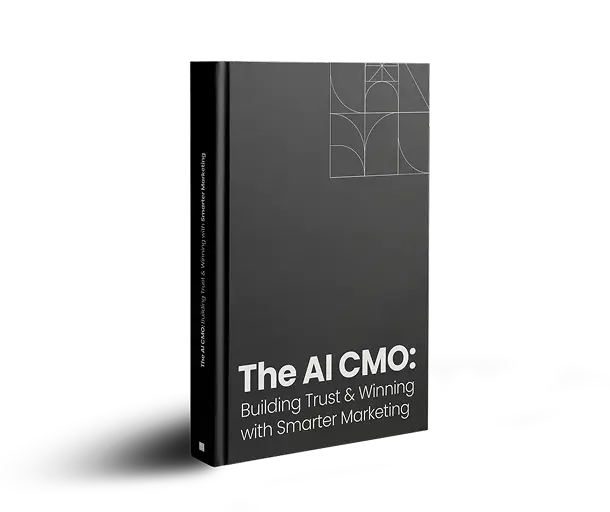
Building an AI-Enabled Marketing Tech Stack: What B2B Leaders Need to Know
In this article
Introduction: Why an AI-Enabled Stack Isn’t Optional Anymore
The Paradigm Shift: From MarTech Consolidation to Intelligent Orchestration
Why Do We Need MarTech and Who Are We Targeting?
Who’s this for?
- CMOs and senior marketing leaders charged with growth in complex B2B environments.
- RevOps and GTM teams strive for alignment between marketing, sales, and customer success.
- Any leader who sees AI not as a threat but as an accelerator for customer connection, pipeline velocity, and brand value.
The B2B Marketing Transformation: Navigating the Age of Artificial Intelligence
1. The Shifting Tech Landscape
2. Key Drivers of Change
- Buyer Expectations Are Rising: Today’s B2B buyers expect hyper-relevant, personalized journeys and companies need to respond with agility and precision.
- Personalization at Scale Is Mandatory: Manual segmentation isn’t enough; AI lets you treat each buyer as a “segment of one”, delivering tailored messages when and where they’re most effective.
- AI-Native Competitors Are Raising the Bar: Lean, adaptable companies with fully integrated, AI-native stacks are putting pressure on legacy players to innovate or get left behind.
Core Pillars of an AI-Enabled Marketing Stack
-
Data Layer: The Foundation: The data layer is the bedrock upon which everything else is built. It’s where you consolidate and harmonize all your customer data from first-, second-, and third-party sources into unified Customer Data Platforms (CDPs).This layer is responsible for real-time data ingestion, cleansing, and enrichment, turning raw signals into actionable profiles. It also enforces strong safeguards for privacy, compliance, and ethical use of data, making sure you’re not just collecting information but using it responsibly and transparently.
-
AI Layer: The Intelligence Engine: The AI layer converts unified data into powerful, actionable insight. Large Language Models (LLMs) like GPT, Gemini, and Claude drive content personalization, enrichment, and delivery.Meanwhile, Natural Language Processing (NLP) lets you extract sentiment and intent from conversations and customer messages, closing the feedback loop and deepening your understanding of buyer needs.Predictive models within this layer help you score leads, prioritize opportunities, and anticipate future buying behavior. It empowers your team to act smarter and faster.
-
Orchestration Layer: Decisioning and Automation: This layer is where your stack comes alive, making decisions and triggering actions in real time. AI-powered workflow engines, like Zapier and Workato with integrated AI, streamline manual tasks and connect disparate systems. Your customer journeys become dynamic and adapt, reacting to signals and performance to maximize engagement.This orchestration converts your strategies from static campaigns into sophisticated, multichannel programs, shifting from traditional account-based marketing to a more refined, next-generation account experience (ABX).
-
Engagement Layer: Channel Execution: This is where your strategies become a reality.AI-optimized platforms, for email, ads, and website personalization and execute campaigns tailored to individual preferences and readiness to buy. Conversational AI, through chatbots and virtual assistants, provides scalable, 24/7 engagement across your digital properties. Additionally, social listening and influencer marketing tools leverage AI to identify key conversations and advocates, allowing you to respond promptly and connect with your market in a more human, insightful way. Together, these four pillars enable you to move from legacy, reactive marketing to a smarter, more adaptable approach, where your stack evolves alongside your business goals and your customers’ needs.

Building Blocks: Tools That Should Be in Every AI-Forward CMO’s Stack
|
Pillar |
Purpose |
Examples of Tools |
|
Data (Foundation) |
Unify and activate all customer signals in a single view; cleanse, resolve, and govern data |
Customer Data Platforms (CDPs) like Segment, Hightouch, RudderStack |
|
AI (Intelligence) |
Provide analytical power for scoring, personalization, and content, and uncover hidden patterns |
Large Language Model (API) providers like OpenAI GPT-4, Claude, Gemini; specialized scoring and enrichment platforms |
|
Orchestration (Decision) |
Automate workflows, activate segments, and respond in real time across journeys |
Orchestrator platforms like Zapier (with AI), Workato, HubSpot Operations, Marketo Engage |
|
Engagement (Execution) |
Deliver tailored messages across email, social, phone, and chat |
Email personalization platforms like Mutiny, Instantly; ad platforms like Metadata; chat and messaging platforms like Drift, PathFactory, and ChatGPT API |
|
NLP, Voice of Customer, and Competitive Insights |
Analyze conversations, reviews, surveys, and calls to extract actionable signals |
Speech and text analytics platforms; sales call analysis (e.g., Gong, Chorus), NLP-native solutions for reviews and surveys |
|
AI-native Tools (General) |
Provide flexible, API-native components you can integrate across your stack |
ChatGPT API, OpenAI, Cohere, Hugging Face for custom models, scoring, and enrichment |
Strategic Playbook: How to Design and Scale Your AI Stack
Designing and scaling your stack isn’t a “set it and forget it” process; it’s a journey — from first experiments to enterprise-wide transformation. Here’s a clear roadmap to guide you:
1. Define Your AI Vision and Objectives
- Are you trying to accelerate pipeline growth, lift Customer Lifetime Value (CLV), or shorten sales cycles?
- Begin by identifying key goals and framing your maturity path, from testing to integrating, scaling, and innovating to match your capabilities and resources.
2. Assess and Audit Your Current Tech Infrastructure
- Map your existing tools against your goals to find redundancies, gaps, and bottlenecks.
- Evaluate each tool’s readiness to integrate with large models, automation platforms, and customer data sources.
3. Establish a Center of Excellence (CoE)
- Assemble stakeholders from marketing, data, RevOps, and IT.
- Develop clear guidelines and workflows for experimenting, scaling, and measuring the impact of your initiatives.
- Provide training and education to raise the team’s baseline knowledge of what’s possible with AI-native technologies.
4. Partner Ecosystem and Vendor Strategy
- Prioritize providers who align with your goals, follow ethical AI practices, and innovate quickly.
- Look for an ecosystem that supports open APIs, composable components, and a flexible architecture, making future expansion, swapping, or adding components easy and cost-effective.
Actionable Checklist: CMO’s First 90 Days Toward AI Enablement
- Define AI goals tied to GTM strategy
- Categorize current stack: core, redundant, obsolete
- Create AI vendor scorecard and shortlist
- Launch one AI pilot per pillar
- Roll out AI literacy workshops for marketing
- Set up a continuous feedback loop for AI optimization
What’s Holding Your Team Back from Engaging the Right Leads?
Be a part of 1000+ successful clients that have chosen UnboundB2B for growth.
Discover more resources

Successful B2B Lead Generation requires generating Marketing Qualified Leads. In this article, we have discussed how to identify MQLs and 10 practical tips to generate more MQLs. These tips cover essential strategies from optimizing your sales funnel to leveraging engaging videos and interactive content. You'll learn about the importance of strong calls-to-action, utilizing chatbots, and implementing Account-Based Marketing. We'll explore how a Customer Data Platform can improve your targeting and lead-generation efforts. By implementing these strategies, you can significantly improve your MQL generation and boost your B2B growth.

Demand for SaaS products and services has increased significantly in recent years. By making cloud-based software solutions more accessible, SaaS companies bring technology closer to modern businesses. The increased demand has resulted in a highly competitive SaaS environment. One effective strategy companies can use to stay ahead of the competition is SaaS advertising. Read on to discover how ad platforms facilitate SaaS advertising and find out which advertising platforms your company can leverage to succeed in sales.


 Data Layer: The Foundation: The data layer is the bedrock upon which everything else is built. It’s where you consolidate and harmonize all your customer data from first-, second-, and third-party sources into unified Customer Data Platforms (CDPs).This layer is responsible for real-time data ingestion, cleansing, and enrichment, turning raw signals into actionable profiles. It also enforces strong safeguards for privacy, compliance, and ethical use of data, making sure you’re not just collecting information but using it responsibly and transparently.
Data Layer: The Foundation: The data layer is the bedrock upon which everything else is built. It’s where you consolidate and harmonize all your customer data from first-, second-, and third-party sources into unified Customer Data Platforms (CDPs).This layer is responsible for real-time data ingestion, cleansing, and enrichment, turning raw signals into actionable profiles. It also enforces strong safeguards for privacy, compliance, and ethical use of data, making sure you’re not just collecting information but using it responsibly and transparently. AI Layer: The Intelligence Engine: The AI layer converts unified data into powerful, actionable insight. Large Language Models (LLMs) like GPT, Gemini, and Claude drive content personalization, enrichment, and delivery.Meanwhile,
AI Layer: The Intelligence Engine: The AI layer converts unified data into powerful, actionable insight. Large Language Models (LLMs) like GPT, Gemini, and Claude drive content personalization, enrichment, and delivery.Meanwhile,  Orchestration Layer: Decisioning and Automation: This layer is where your stack comes alive, making decisions and triggering actions in real time. AI-powered workflow engines, like Zapier and Workato with integrated AI, streamline manual tasks and connect disparate systems.
Your customer journeys become dynamic and adapt, reacting to signals and performance to maximize engagement.This orchestration converts your strategies from static campaigns into sophisticated, multichannel programs, shifting from traditional account-based marketing to a more refined, next-generation account experience (ABX).
Orchestration Layer: Decisioning and Automation: This layer is where your stack comes alive, making decisions and triggering actions in real time. AI-powered workflow engines, like Zapier and Workato with integrated AI, streamline manual tasks and connect disparate systems.
Your customer journeys become dynamic and adapt, reacting to signals and performance to maximize engagement.This orchestration converts your strategies from static campaigns into sophisticated, multichannel programs, shifting from traditional account-based marketing to a more refined, next-generation account experience (ABX). Engagement Layer: Channel Execution: This is where your strategies become a reality.AI-optimized platforms, for email, ads, and website personalization and execute campaigns tailored to individual preferences and readiness to buy. Conversational AI, through chatbots and virtual assistants, provides scalable, 24/7 engagement across your digital properties. Additionally, social listening and influencer marketing tools leverage AI to identify key conversations and advocates, allowing you to respond promptly and connect with your market in a more human, insightful way. Together, these four pillars enable you to move from legacy, reactive marketing to a smarter, more adaptable approach, where your stack evolves alongside your business goals and your customers’ needs.
Engagement Layer: Channel Execution: This is where your strategies become a reality.AI-optimized platforms, for email, ads, and website personalization and execute campaigns tailored to individual preferences and readiness to buy. Conversational AI, through chatbots and virtual assistants, provides scalable, 24/7 engagement across your digital properties. Additionally, social listening and influencer marketing tools leverage AI to identify key conversations and advocates, allowing you to respond promptly and connect with your market in a more human, insightful way. Together, these four pillars enable you to move from legacy, reactive marketing to a smarter, more adaptable approach, where your stack evolves alongside your business goals and your customers’ needs.




